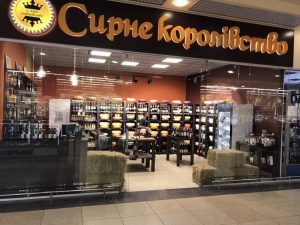
Ukraine in January-March 2020 exported 1,210 tonnes of cheese, which is 26.5% less than in the same period in 2019.
According to the State Customs Service, in monetary terms exports decreased by 20.3% and amounted to $4.67 million.
The import of cheese in the first quarter of 2020 grew by 2.5 times, to 10,210 tonnes, in monetary terms 2.4 times, to $45.2 million.
Export of Ukrainian butter decreased by 47.4%, to 3,100 tonnes, in money terms by 39.3%, to $14.48 million. Import of the products in the reporting period amounted to 2,790 tonnes ($12.03 million) compared to 211 tonnes ($1.44 million) for the first quarter of 2019.
According to the service, the export of milk and cream (condensed) decreased by 25.3%, to 4,450 tonnes in the first three months of 2020. Ukraine supplied condensed milk and cream for a total of $10 million, which is 11.8% lower than in January-March 2019. Imports of the goods grew by 2.2 times, to 1,030 tonnes, in money terms 2.5 times, to $2.39 million.
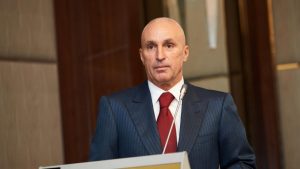
Ukrainian businessman Oleksandr Yaroslavsky, the former co-owner of UkrSibbank, could acquire Bank Credit Dnipro, which is currently owned by Ukrainian businessman Victor Pinchuk.
The Antimonopoly Committee of Ukraine (AMC) told Interfax-Ukraine that the agency allowed Yaroslavsky to purchase more than 50% of the shares in the bank.
EastOne investment and consulting group, combining Pinchuk’s assets, did not comment on this information.
Yaroslavsky at the end of January informed Interfax-Ukraine agency about the completion of preparation of the documents necessary for the transaction on the purchase of Bank Credit Dnipro, which could happen in the coming days.
Bank Credit Dnipro was founded in 1993.
According to the National Bank of Ukraine, as of October 1, 2019, in terms of total assets (UAH 11.784 billion) the bank ranked 21st among 76 existing ones. In early February this year, the bank completed the procedure of increasing charter capital by UAH 866.562 million, or 32%, to UAH 3.587 billion.
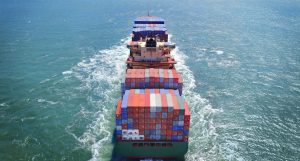
Tariffs for sea freight and air cargo have increased, while the cost of international road haulage has stabilized, but there may be queues at the key automobile checkpoints, Viktor Shevchenko, the co-owner of Zammler logistics group, has told Interfax-Ukraine. “Compared to the beginning of the year, now due to coronavirus [COVID-19] epidemic spread, tariffs for sea freight have risen by an average of $150-200 per TEU. A jump in prices occurred in March, as China began to recover production activity, demand for cargo departures increased, there was a shortage of places, respectively, the cost increased,” he said.
According to Shevchenko, due to the following sanitary and hygienic safety rules, procedures for processing goods in ports are delayed.
According to him, in connection with the epidemic, there is no air traffic now, thus, cargo carried earlier by passenger flights is delivered by cargo planes.
“Accordingly, there are not enough places for cargo departures. Airlines that continue to fly to Ukraine with cargo planes have increased tariffs. Now a place for departure should be booked a few days before departure, tariffs are provided in the mode for today,” the co-owner of Zammler said.
Shevchenko also said that over the past week, the situation with international trucking has changed dramatically.
“If last week tariffs on imported freight were 40-50% higher than pre-quarantined, to date the price situation has stabilized. Last week there was a shortage of transport in Europe due to high demand (recipients tried to replenish stocks of goods). But now we see a shortage of goods, namely enterprises are suspending operations, the volume of exports and imports is declining,” he said.
According to Zammler’s forecasts, the queues at key automobile checkpoints will soon resume again due to the closure of the Hrebenne-Rava-Ruska checkpoint.
Shevchenko said that the cost of freight traffic in the territory of Ukraine due to the epidemic has not yet changed.
“There is a slight decline in volumes, to 10%. It is difficult to predict the further value, since it directly depends on the stability of the exchange rate,” he said.
Zammler Group is a Ukrainian group of logistics companies with offices in Europe and Asia. The group companies provide all types of logistics services for the B2B segment.
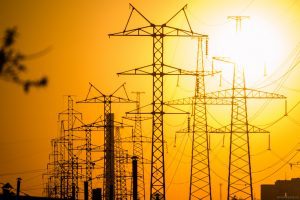
Myronivsky Hliboproduct (MHP) has announced the start of construction of a 25 MW Battery Energy Storage System (BESS) in Ladyzhyn, Vinnytsia region, this year.
According to a press release by MHP, the agricultural holding began implementing a conceptual project for the construction of the Energy Storage in Vinnytsia region as part of the creation of the energy cluster MHP Energy Hub. The implementation of energy projects of the agricultural holding is carried out by PrJSC MHP Eco Energy, which is an electricity supplier and a management company of the largest biogas energy producers in Ukraine.
“The first step of MHP Eco Energy is announcing a tender for the development of a feasibility study for connecting BESS to power grids, with the possibility of using Smart Grid Technologies in the future,” MHP said.
According to MHP, the implementation of the project for the construction of BESS with a capacity of 25 MW in Ladyzhyn will begin in 2020 and will take place in four stages: the first one of 5 MW/5MWh, the second of 5 MW/5 MWh (the total capacity of 10 MW/10 MWh), the third of 5 MW/5 MWh (the total capacity of 15 MW/15 MWh), the fourth one of 10 MW/10 MWh (the total capacity of 25 MW/25 MWh).
“Ukraine needs to reduce its dependence on “dirty” energy and very quickly upgrade its energy infrastructure through the use of Energy Storage and Smart Grid in order to remain economically competitive and energy independent. The accumulation of energy will allow us to have a power supply that will be available 24/7. Energy storage plays an important role in creating a more flexible and reliable system of operation of power grids,” MHP noted.

The duty of 65% on coal imported from the Russian Federation to Ukraine with some exceptions is imposed from April 15, 2020, according to government resolution No. 261 dated March 18.
The exception is anthracite coal, bituminous coal and coking coal for metal industry, as well as lean coal for companies generating electricity and heat.
The imposition of the duty on imported electricity earlier announced at the government meeting is not envisaged in the document.
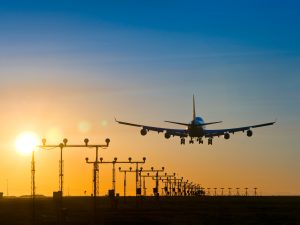
Ukraine International Airlines (UIA) plans to start the usual mode of dialog with passengers in one month, UIA President Yevhen Dykhne has said in an interview with Interfax-Ukraine.
“I won’t tell you the exact number how many passenger requests have been handled right now. Since the termination of flights, we have about 27,000 requests pending response. And almost the same number arrived at UIA client communication platforms in the early days of this period,” he said.
According to Dykhne, the additional difficulty with handling passenger requests is that UIA is forced to quit the usual work through call centers under quarantine conditions.
“Most often, call centers are built on open space technology and work in them does not comply with quarantine conditions. Therefore, our own call center and the external call centers that serviced us were closed. We switched to e-mailing and messaging with passengers,” the president of UIA said.
A total of up to 150 people in the airline is involved in e-mailing and messaging with passengers. In one working day, this number ranges from 60 to 110, as such employees work remotely, while in the call center up to 600 employees of the airline worked simultaneously at the peak hours.
“Today, we handle up to 2,000 requests a day, but it’s still 90% less than it is being received. I think that we will need another month of work in order to get into the usual dialogue with passengers, not all-hands work, because mailing and messaging, of course, is a longer process than voice calls,” he said.